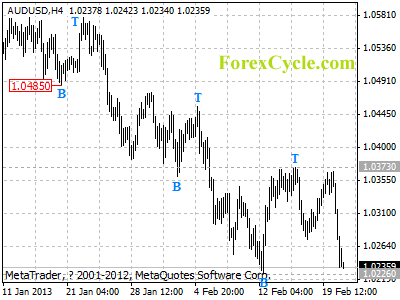By Bill Bonner, billbonnersdiary.
Stocks up another 53 points on the Dow yesterday. Gold down another $5.
The Dow is above its 14,000 peak; gold is below $1,600/oz.
I’ll come back to this in a minute. First…
Even a seasoned traveler can make remarkably dumb mistakes. That’s
why we are writing to you from Baltimore rather than from Beijing. For
the second time in a single week, we got to Dulles International Airport
yesterday and discovered that we lacked the proper visa for travel to
China. We had forgotten that you need a visa at all.
You don’t always go where you intend to go, but you always end up where you ought to be. Why ought we be in Baltimore? We don’t know. But here we are.
Getting Out of Gold
Even seasoned investors make mistakes too. And now they seem to be
selling gold. Yes, dear reader, our favorite metal is taking a beating.
Gold has dropped below $1,600/oz to trade at $1,594/oz at writing. The
best investors are said to be abandoning their yellow metal for more
“productive” positions. From Bloomberg:
Billionaire investors George Soros and
Louis Moore Bacon cut their stakes in exchange-traded products backed by
gold last quarter as futures dropped the most in more than eight years.
John Paulson maintained his holding.
The fourth-quarter decisions by Soros
and Bacon may bolster speculation that gold’s 12-year bull run is coming
to an end as economic data from the U.S. to China show signs of
recovery, curbing haven demand.
Soros Fund Management LLC reduced its
investment in the SPDR Gold Trust, the biggest fund backed by the metal,
by 55% to 600,000 shares as of Dec. 31 from three months earlier, a
U.S. Securities and Exchange Commission filing showed yesterday. Bacon’s
Moore Capital Management LP sold its entire stake in the SPDR fund and
lowered holdings in the Sprott Physical Gold Trust. Paulson & Co.,
the largest investor in SPDR, kept its stake at 21.8 million shares.
And under the headline “Gold Sinks Through $1,600 on Recovery Hopes,” the Financial Times adds:
Gold prices tumbled… for the first time in six months as investors turned to other assets amid hopes of an economic recovery.
Recovery? The U.S., eurozone and Japanese economies are all
(according to the most recent quarterly results) shrinking, not growing.
What kind of a recovery is this?
Nevertheless, mainstream opinion believes this is no time to cower in
the safety of cash… or gold. Take chances. Buy stocks! Look at
Buffett. He’s teamed up with a Brazilian tycoon; they’re paying $28
billion for a ketchup company.
Dumb and Lifeless
Well, what do you think? Are they right?
Why would you ever want to hold gold, anyway? It is dumb and
lifeless. It issues no upbeat press releases. It never “beats analysts’
estimates.” It doesn’t come out with a slick new handheld device… or
announce a major acquisition.
None of the good news you hope to get from an investment ever comes
from gold. No matter how much you own, it doesn’t seem to care about
you; it makes no effort whatever to increase shareholder value.
Instead, it just sits there… like an old umbrella next to the front
door, only useful when it rains. War? Gold goes up. Market crash? Gold
goes up. Inflation? Gold goes up.
End of the world? Who knows, maybe gold would go up too.
So, you decide. What’s ahead? Good news? Or bad news? Will the 100
leading economists be right… or wrong? Fair weather… or foul?
It’s impossible to say. So, we hedge our bets. We own some real
investments – stocks, bonds, real estate – and hope the 100 leading
economists know what they are talking about.
And we hold on to our gold too… in case they turn out to be the numbskulls they usually are.
Regards,

Bill
Huge Gains on “Poor Man’s Gold”
Silver has all the benefits of gold and trades at a small fraction of
the price… some even call it “poor man’s gold.” But the extremely low
price of silver is due to a “price glitch” that’s about to be
corrected. If you get in now, you could be looking at gains as high as
521%. And I’d like to share three ways to play the silver boom for big
profits today.
You must see this now or risk losing out…
Other Related Articles:
- Do You Deserve to Lose Money
- Did These Hidden Forces Elect the President?
- How to Make a Safe 16.5% on Your Money Without Touching Stocks






